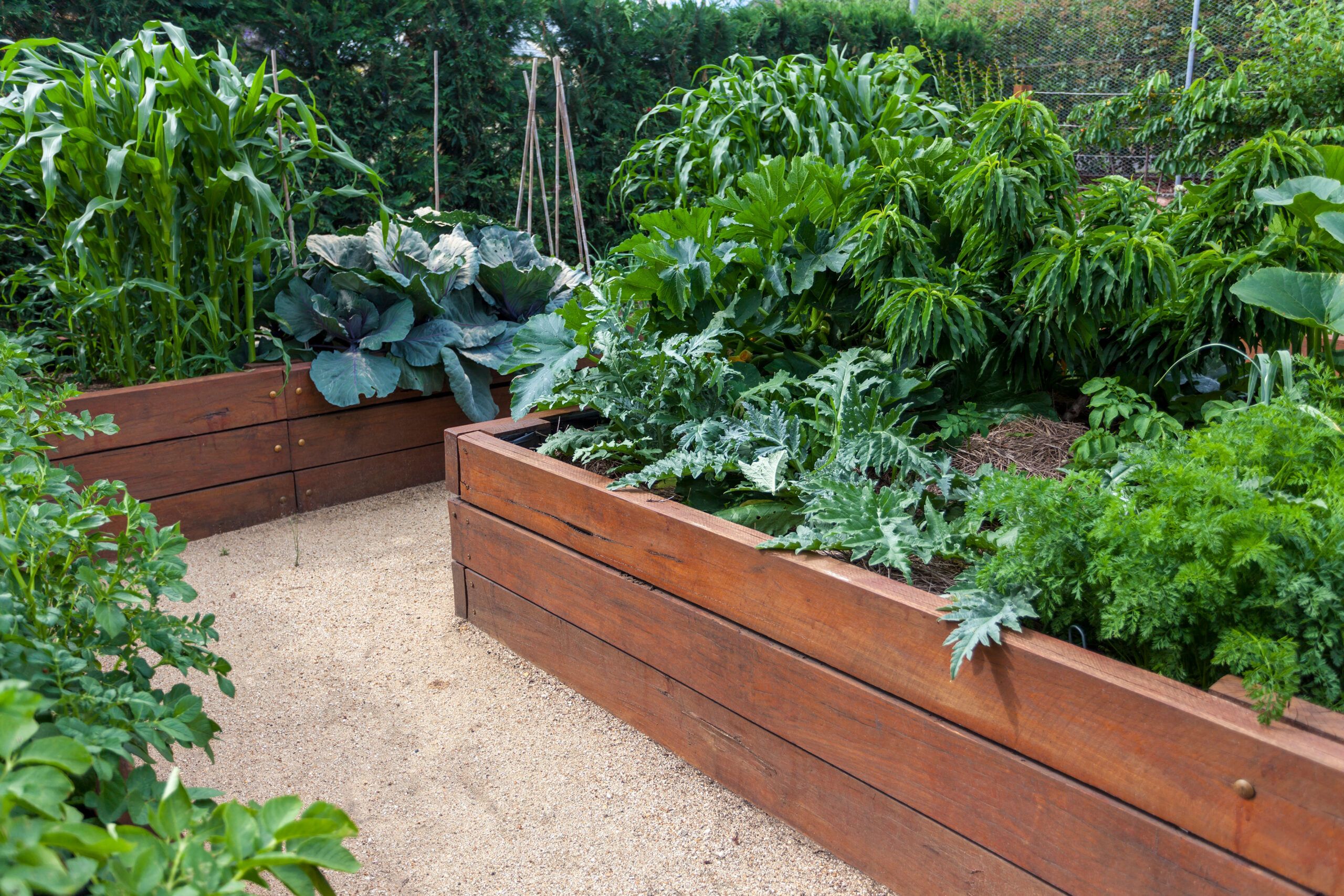Whether you’re looking to grow vegetables and herbs for cooking or care for some flowers as a hobby, raised garden beds can be an ideal growing environment. Keep reading to learn everything you need to know about creating and maintaining them.
Should I Scratch Build a Garden Bed or Use a Kit?
Until fairly recently, the only way to get a raised bed was to buy some boards, cut them to size, and screw them together yourself. You could also hire a mason to build one for you out of brick or stone. The only limits were your imagination and budget.
But these days, you can find a growing assortment of all-inclusive raised-bed kits with precut parts that save time, eliminate guesswork, and offer a variety of looks. They may not have the one-of-a-kind uniqueness of scratch or professionally built beds, but they come in a wide array of attractive materials.
Determining Optimal Size and Shape for Your Garden Bed
Your raised beds’ size and shape will depend on your available space, gardening goals, and personal preferences. Follow these guidelines to get off to a good start.
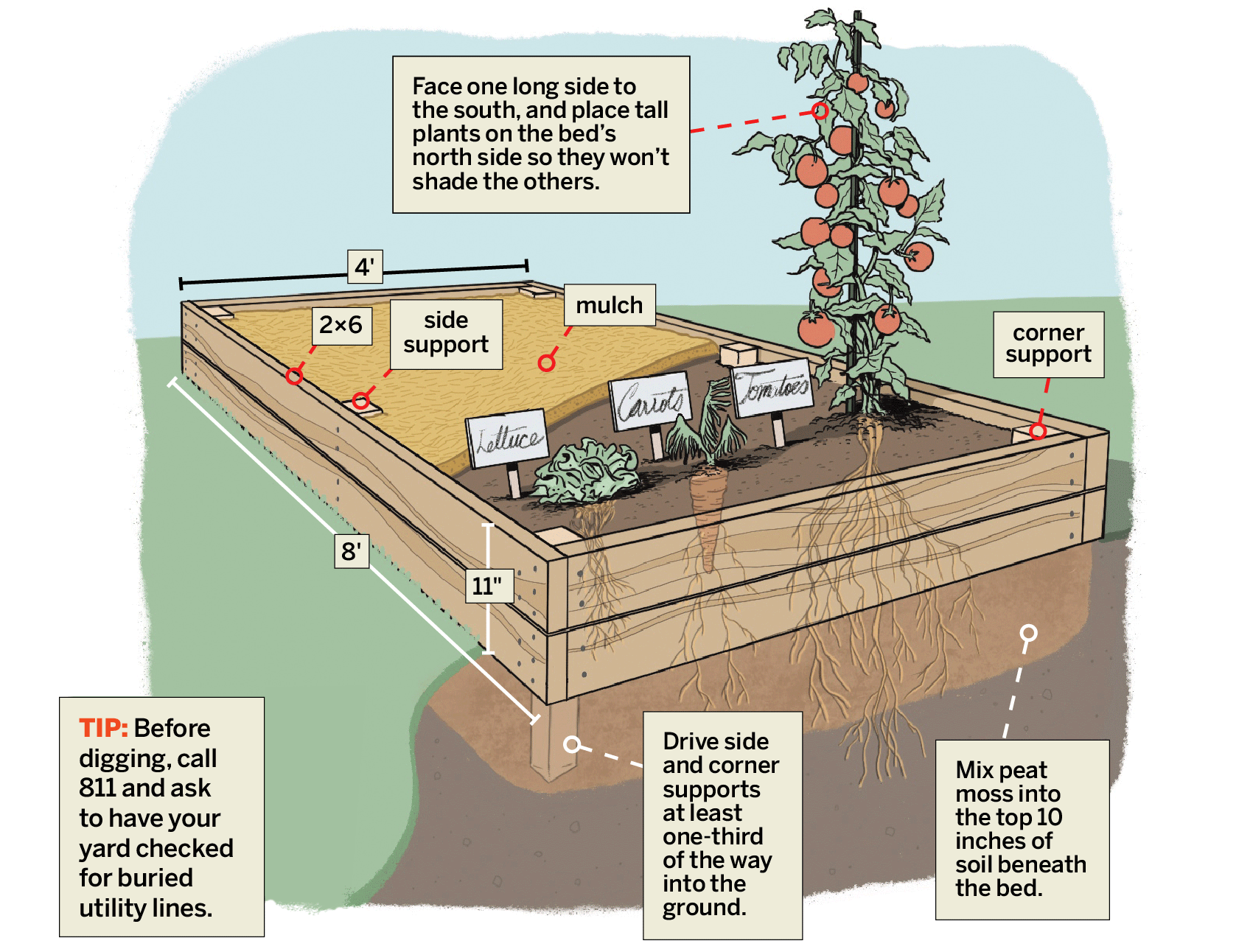
Size Considerations
Raised beds can be any length so long as the sides have supports every 3 to 4 feet. This helps resist outward pressure from the soil. Either drive 2 stakes next to the sides or attach the ends of wood or metal strapping to opposite sides of the bed.
Low-height beds are easier to build and fill but require double digging to prep soil beneath the bed. High beds mean less digging and stooping but more soil and building materials. A common height is 11 inches, which equals two 2×6 boards stacked on the edge.
For width, 4 feet across is a comfortable size allowing you to reach the center from either of the long sides.
Shape Considerations
Rectangular, square, and L-shaped beds are common for raised beds. However, you can customize the shape to fit your garden’s layout and design.
Depth of the Soil
How much soil you need for your raised bed will depend on what you want to grow.
Tender herbs can grow in 6–8 inches of soil, but many roots go much deeper. Make room for them by building a high-sided bed, double digging below grade, or both. As you dig, amend the top 10 inches of under-bed soil with peat moss or coconut coir. This will help sandy soil hold water and clay soil release it.
If you’re growing vegetables, your beds must be much deeper. Here are a few example depths for different types of veggies:
- 12–18 inches: Lettuce, potatoes, radishes, strawberries
- 18–24 inches: Carrots, peas, beans, cucumbers, peppers
- 24–36 inches: Tomatoes, rhubarb, asparagus, artichokes
Choosing the Right Materials for a Garden Bed
Choosing the right materials ensures your raised garden beds will hold up. This Old House landscape contractor Roger Cook advises against using preservative-treated boards or creosote-soaked railroad ties, which can leach chemicals that contaminate soil. Here are some popular options.
Wood
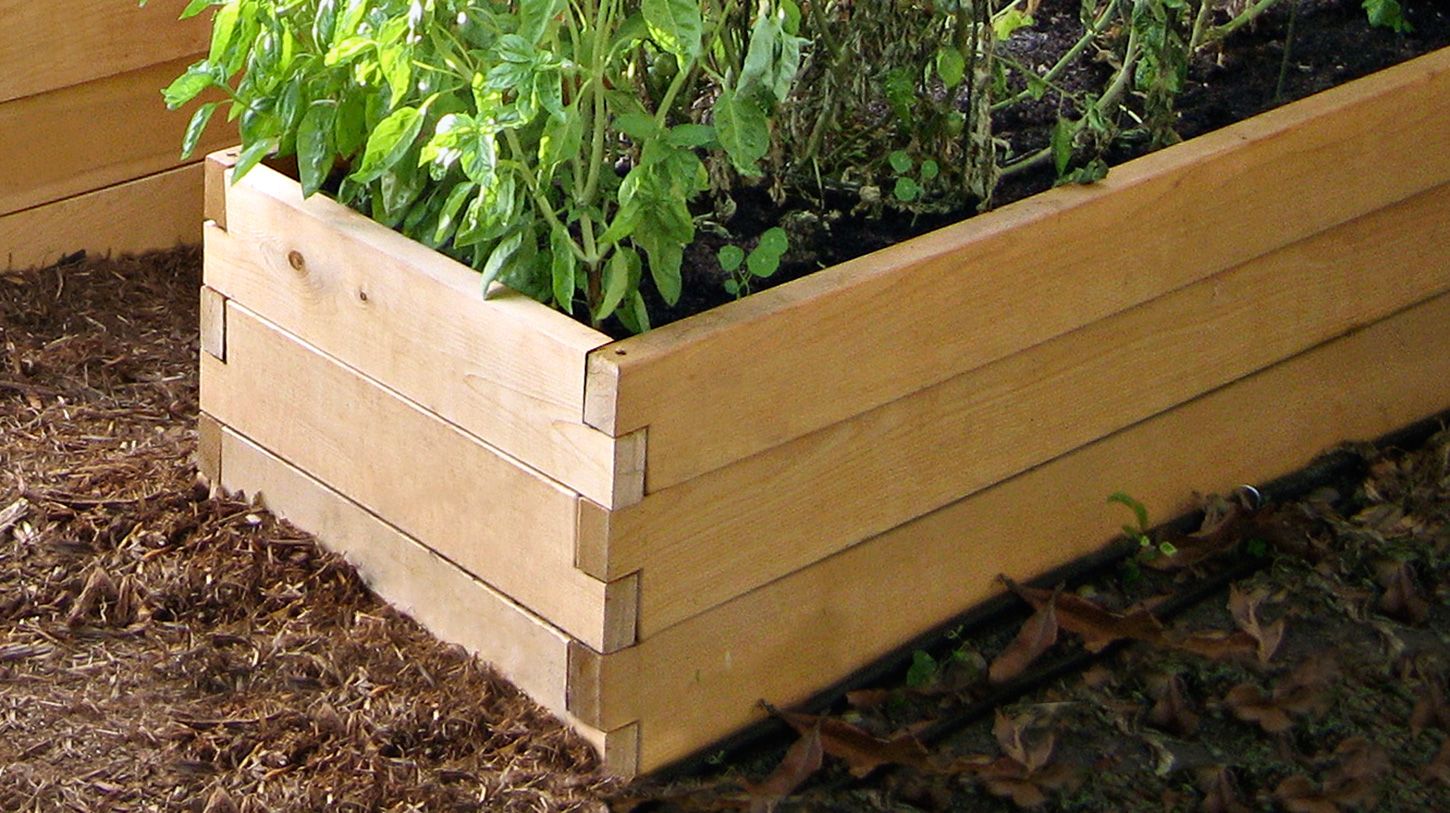
Cedar, redwood, and pressure-treated lumber are commonly used materials for raised garden beds. These types of wood stand up better against rot and decay.
Metal
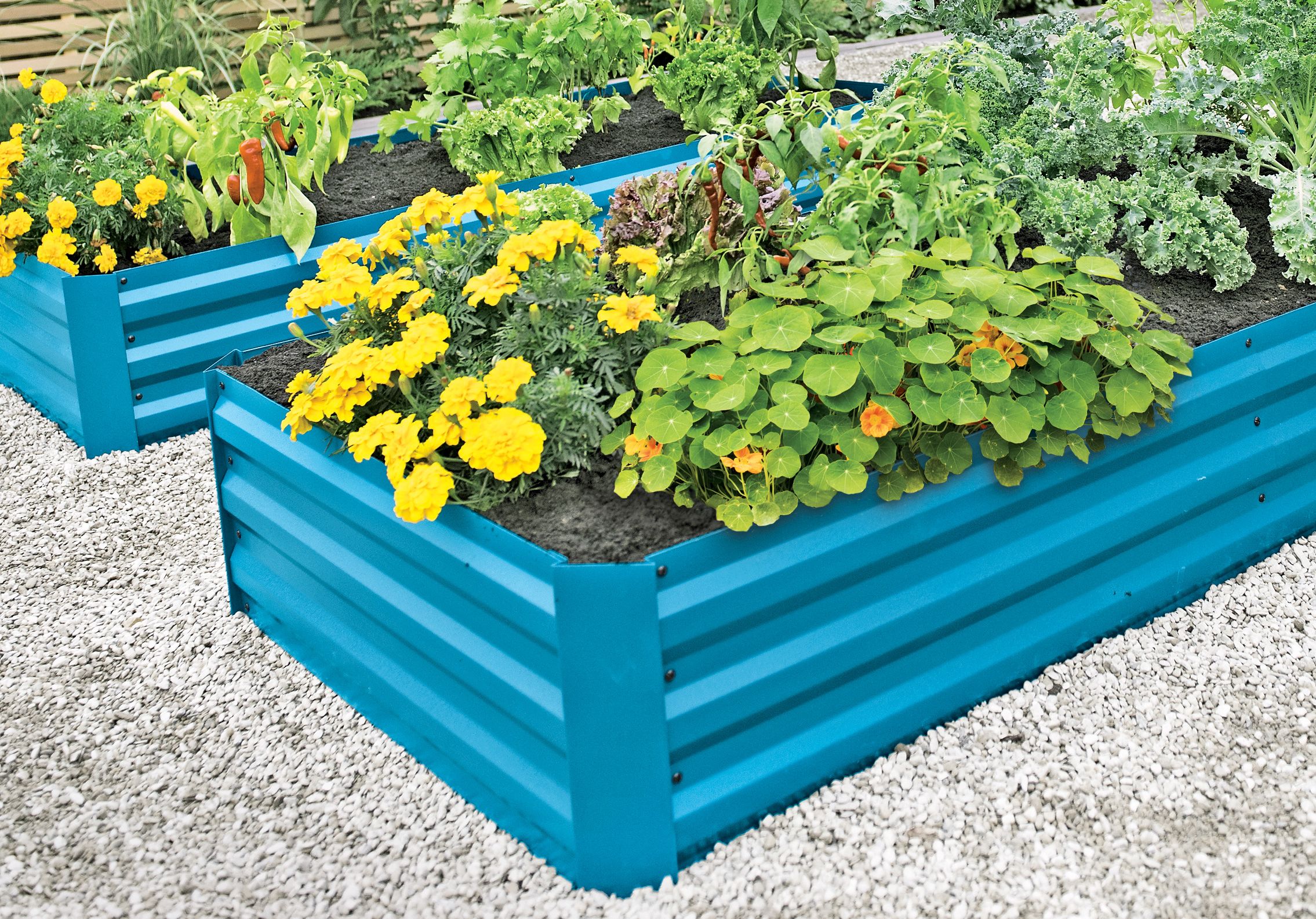
Steel and corrugated metal are good materials for modern and stylish raised garden beds. They’re highly durable, and many are galvanized or powder-coated to stave off rust.
Brick

Stone and brick will last a while with minimal maintenance. If you choose brick, you’ll need a concrete footing below the frost line and someone with good masonry skills to build it.
Stacked Stone
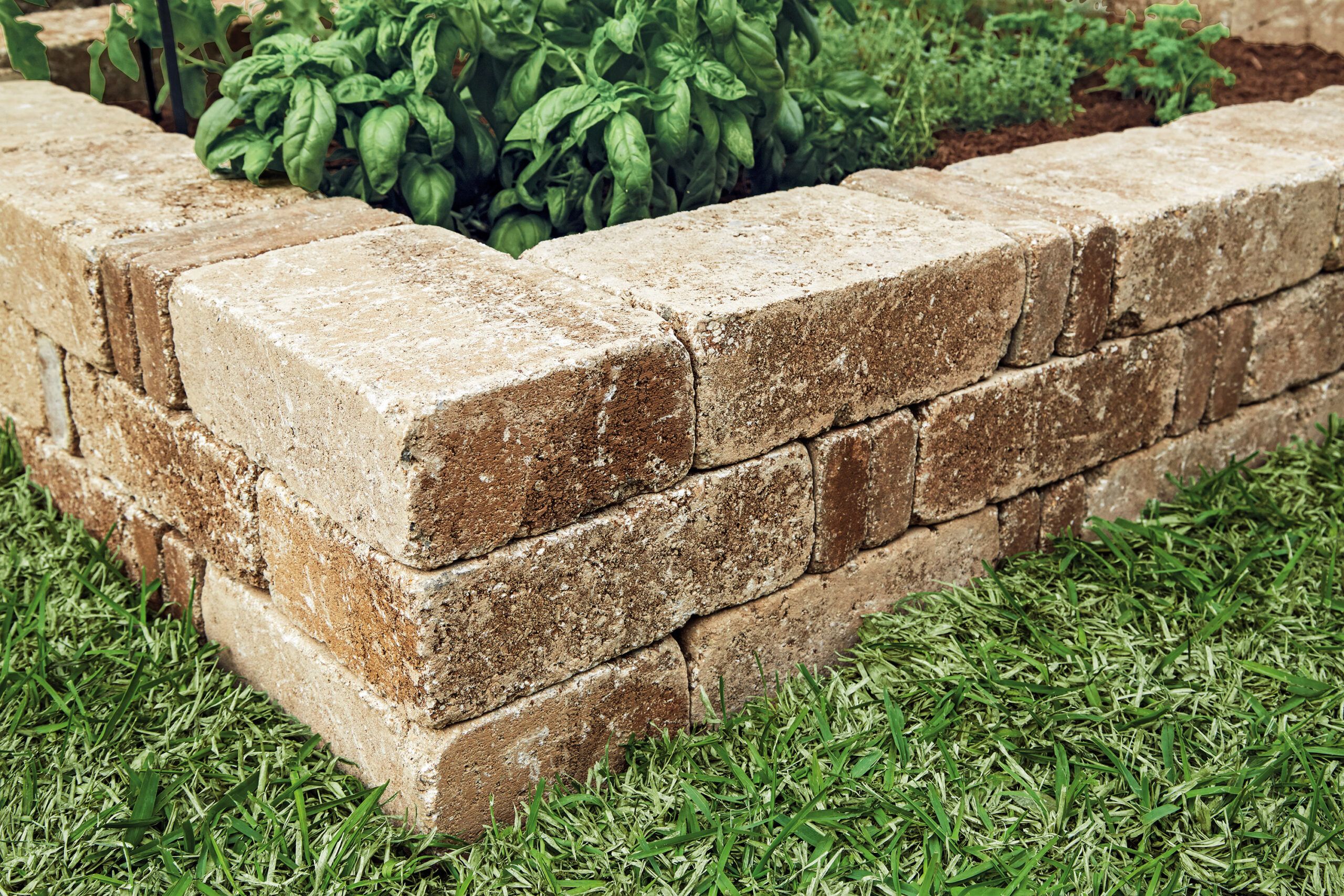
Stacked stone doesn’t need a concrete footing, mortar, or good masonry skills to build. However, it should still have a tamped crushed-stone base and landscape fabric lining.
PVC
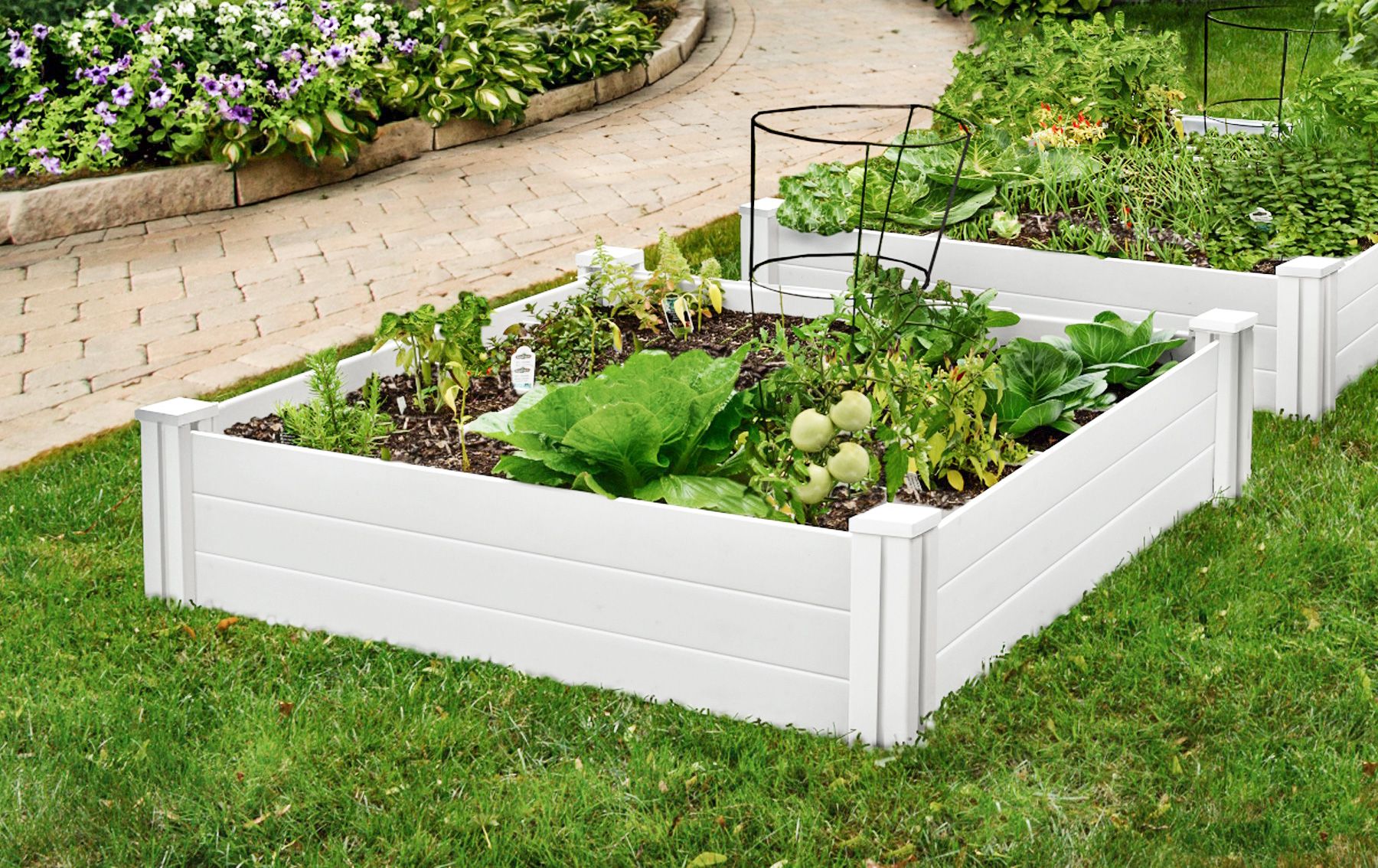
Hollow, food-grade vinyl planks won’t rot or rust, are lighter and more flexible than wood, and help insulate the bed from rapid temperature changes. However, they can get more brittle with age.
Composite Materials

Composite materials made from plastic and wood fiber are more resilient than vinyl and last longer than wood. Just make sure they’re rated for ground contact.
The Secrets of Great Soil for a Garden Bed
Once you’ve built your raised bed, it’s time to prepare the soil. Our tips will help you start your raised bed strong.
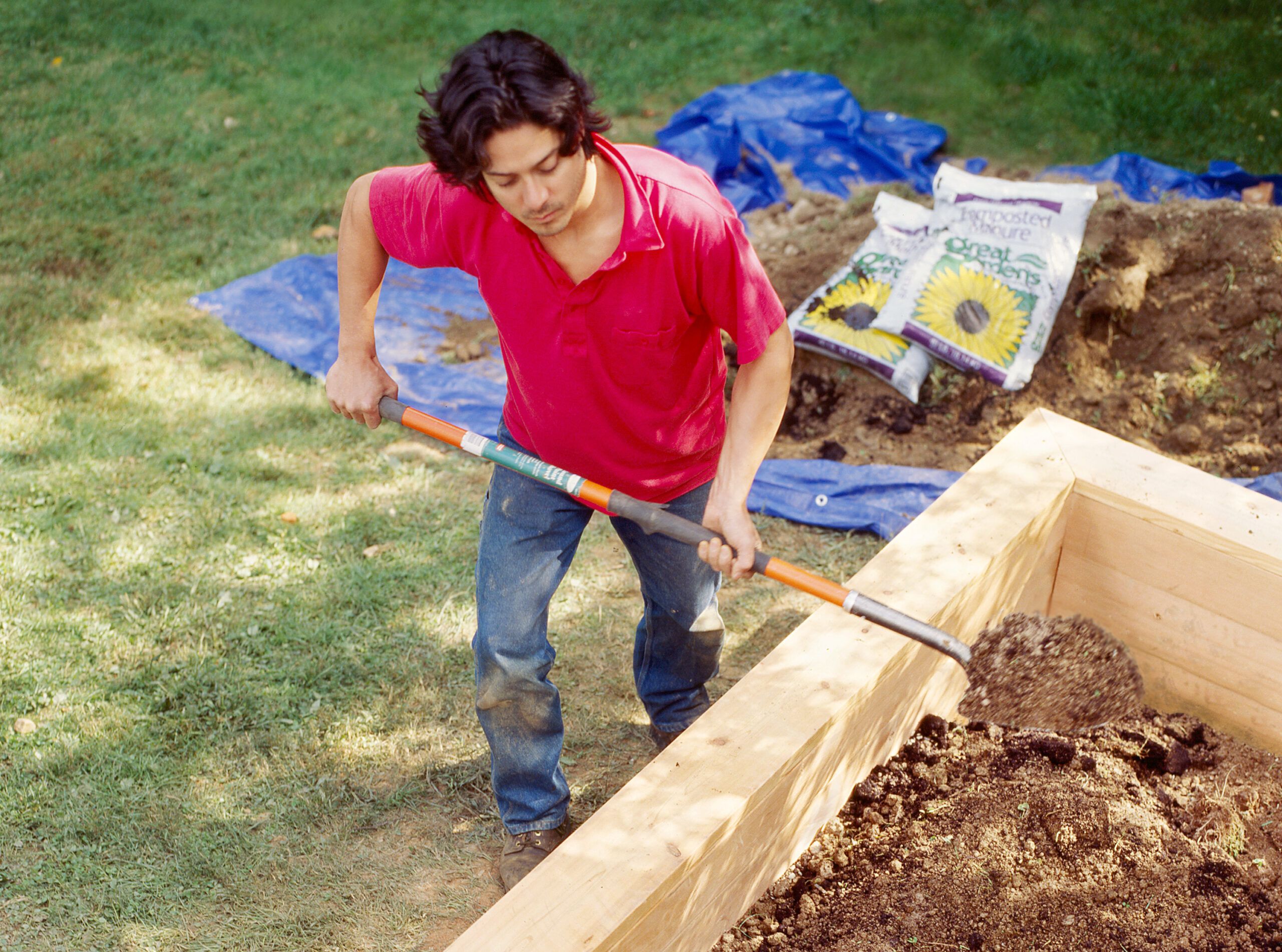
The First Soil
Your beds’ starting soil composition should be rich in nutrients. Some of these formulas are good ways to begin your garden:
- Mix equal parts compost with peat moss (or coconut coir) and vermiculite (or perlite).
- Blend compost 50-50 with topsoil or bagged garden soil.
- If you want an organic bed from the start, buy OMRI-listed bagged soil and compost.
- Soil that doesn’t meet organic standards can be considered organic after three years, so long as it hasn’t been treated with herbicide, pesticide, or synthetic fertilizer.
Soil by the Seasons
In the fall, pull up and compost any spent plant material, and cover the soil with a thick layer of ground-up leaves. Hold them in place with netting so they don’t blow away. You can also plant seeds for a thick cover crop of alfalfa, buckwheat, white clover, or annual ryegrass. Do this one to two months before first frost so the seeds have time to germinate.
In the spring, about a month before you plant, chop the leaves or cover crop into bits with a spade or hoe to blend them into the soil. Before you plant rooted seedlings, fertilize each hole with a few trowelfuls of compost, a scoop of composted manure, and ½ cup of rock phosphate or blood meal.
Design the Corners of Your Garden Bed
You might not give much consideration to your raised bed kits’ corners, but choosing the right ones can make installation simpler and complement your existing landscape.
Low-Profile
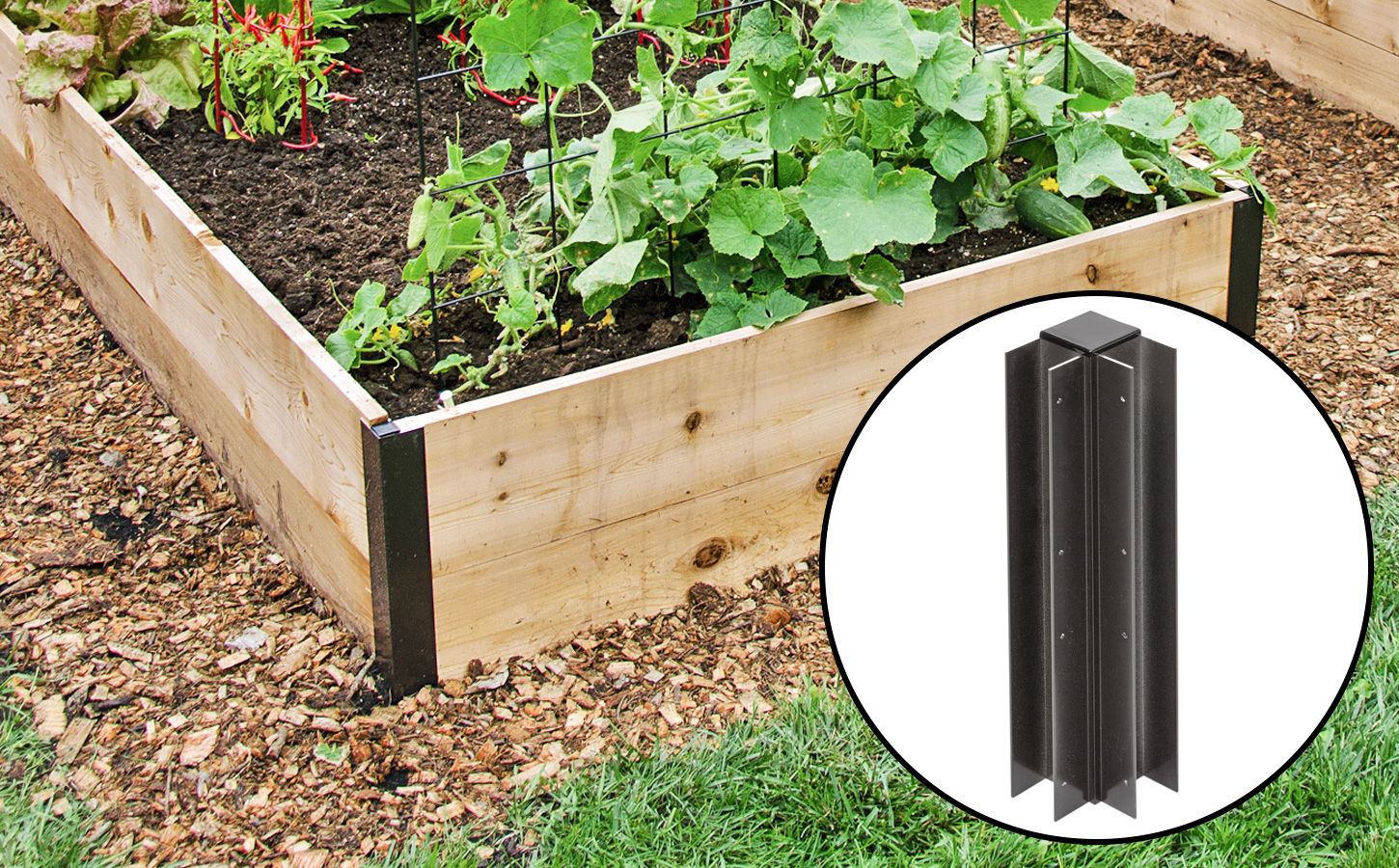
Low-profile corners are 8- to 35-inch tall aluminum brackets. They’re sturdy, accommodating of various heights, and have matching inline extrusions available to connect side walls.
Four-Sided
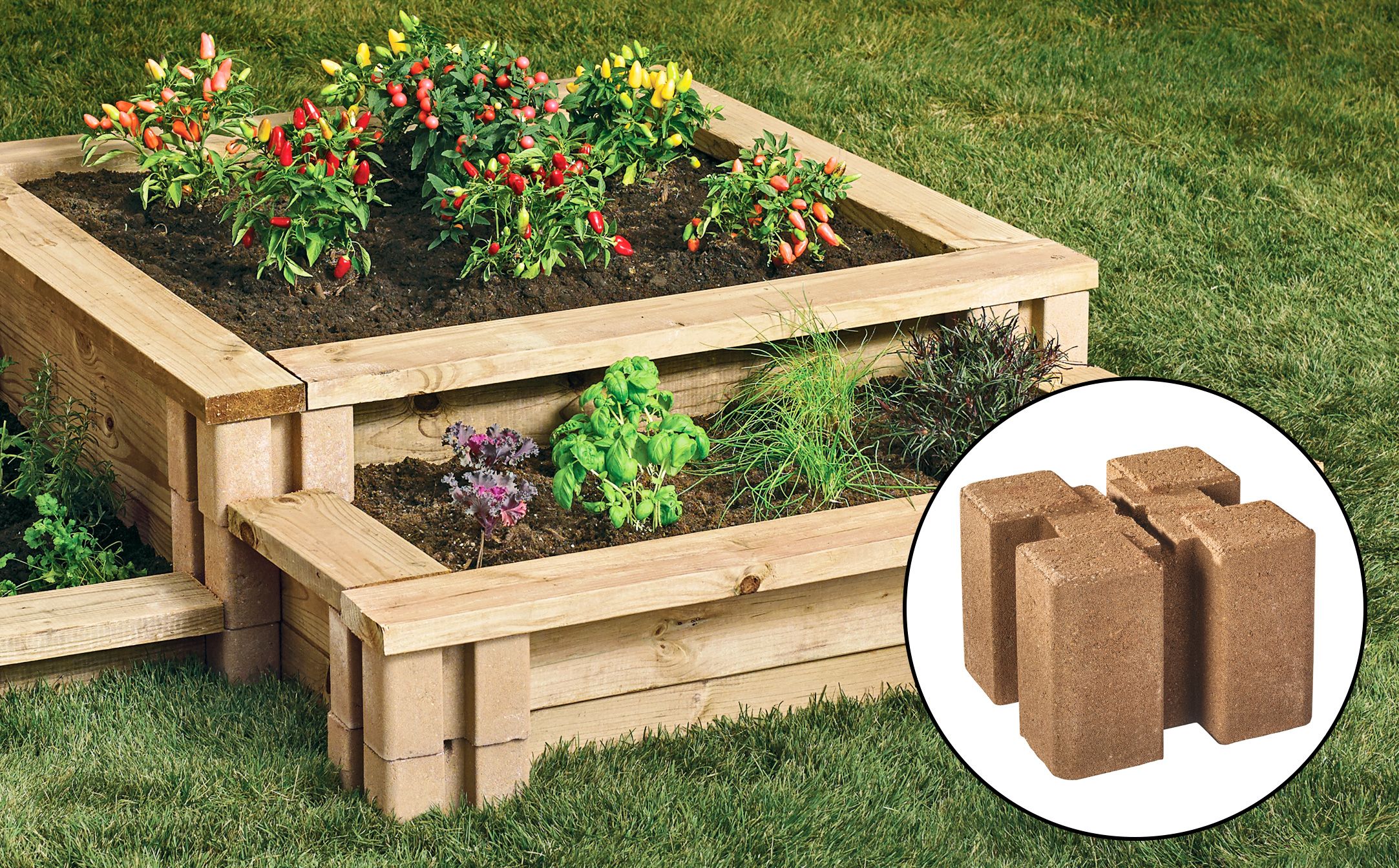
Four-sided corners are often made from wood-plastic composite. They have grooves on all sides to join corners and side walls. You can even link them up with other beds, no screws required. When stacked, they’re held together with rebar driven through their center holes.
Hinged
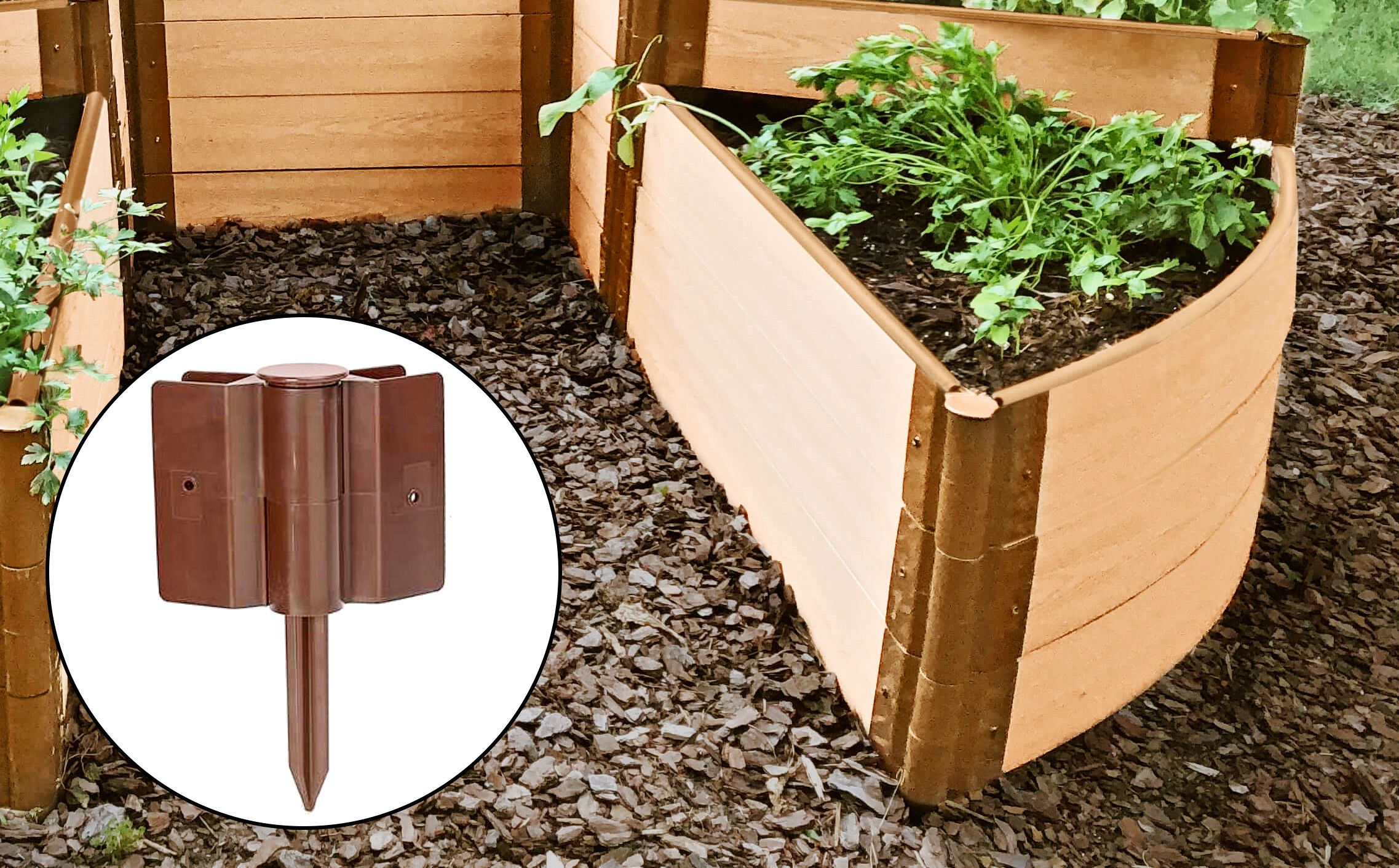
Hinged corners can pivot 270 degrees, letting you build beds in non-rectangular shapes. All you need to do is insert the stake into the bracket below, slot in boards, and secure them with screws.
Irrigation Techniques
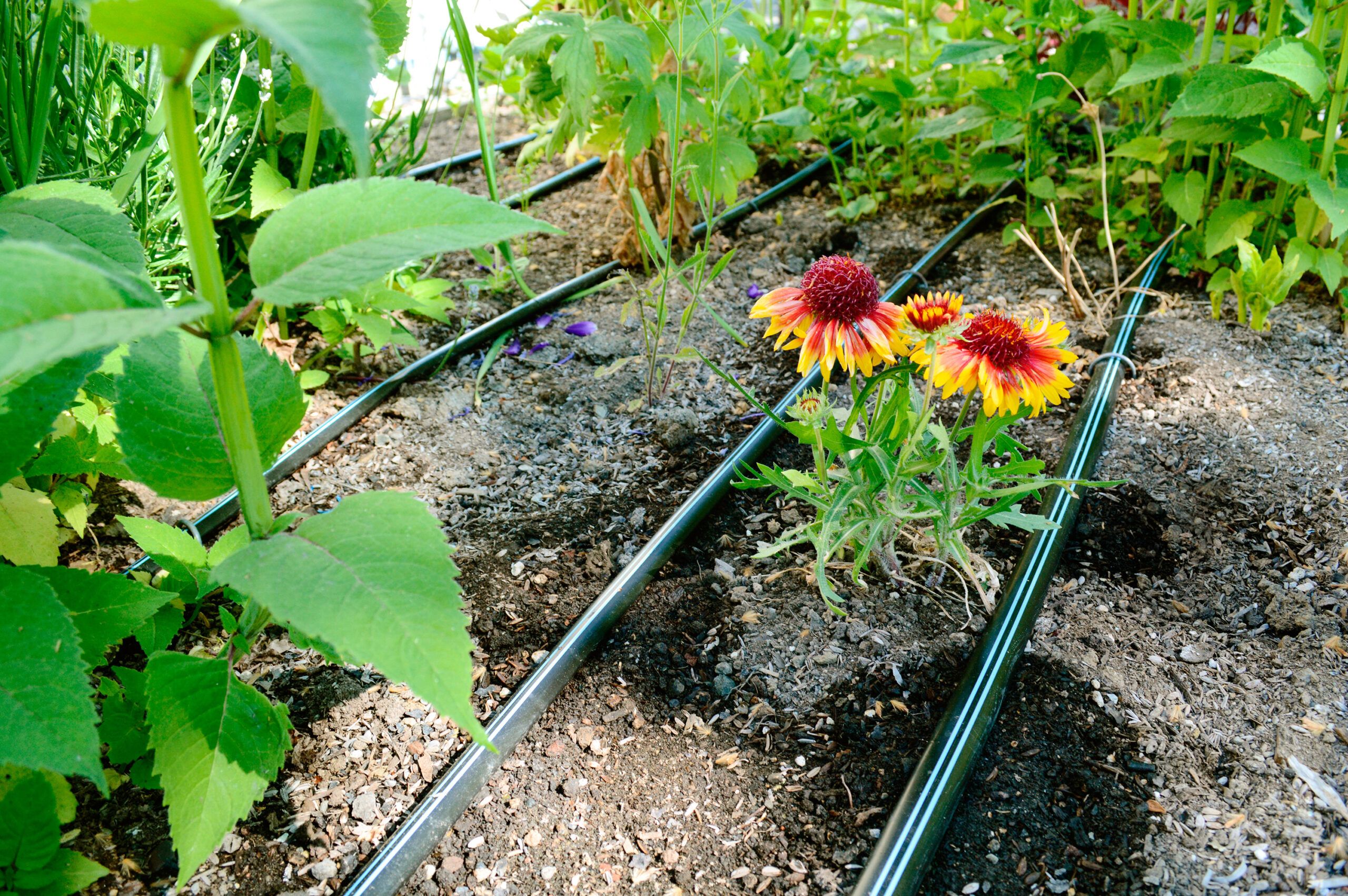
Sprinklers can waste half the water they emit, and hand watering your plants can feel like a chore. Efficient irrigation systems can help deliver water right to the roots, where it’s needed most. Here are a few ideas:
- Drip lines: Drip lines are more expensive but highly efficient and last a long time. Plastic fittings allow the polyethylene tubing to follow any path you choose without a manifold, and you can fit the tubes with drip emitters to send water precisely where you need it to go.
- Drip tape: Drip tape is a flat plastic tubing set in various widths, thicknesses, and hole spacings. They only go in straight runs, so you’ll need a rigid manifold at the end that feeds water to each tape. Just like soaker hoses, you’ll need a pressure regulator set to 15 pounds per square inch (psi) or less to prevent bursting.
- Irrigation controllers: Battery-powered timers let you set the timing, frequency, and duration of waterings. Add-on sensors let you suspend the schedule if it rains to prevent overwatering. Others let you regulate watering based on local forecasts and use your smartphone to control water flow.
- Soaker hoses: At about 40 cents per foot, soaker hoses are inexpensive and uncomplicated. Just lay them in the beds and hold them in place with landscape staples. For spray-free operation, thread on a pressure regulator set to 15 psi and connect the hose to a bib with a backflow preventer.
Shown: Drip tape irrigates in straight runs.
Garden Bed Damage Control
Creeping, crawly, and furry invaders can decimate the plants in your raised bed. Try these strategies to keep them at bay.
Tree Roots
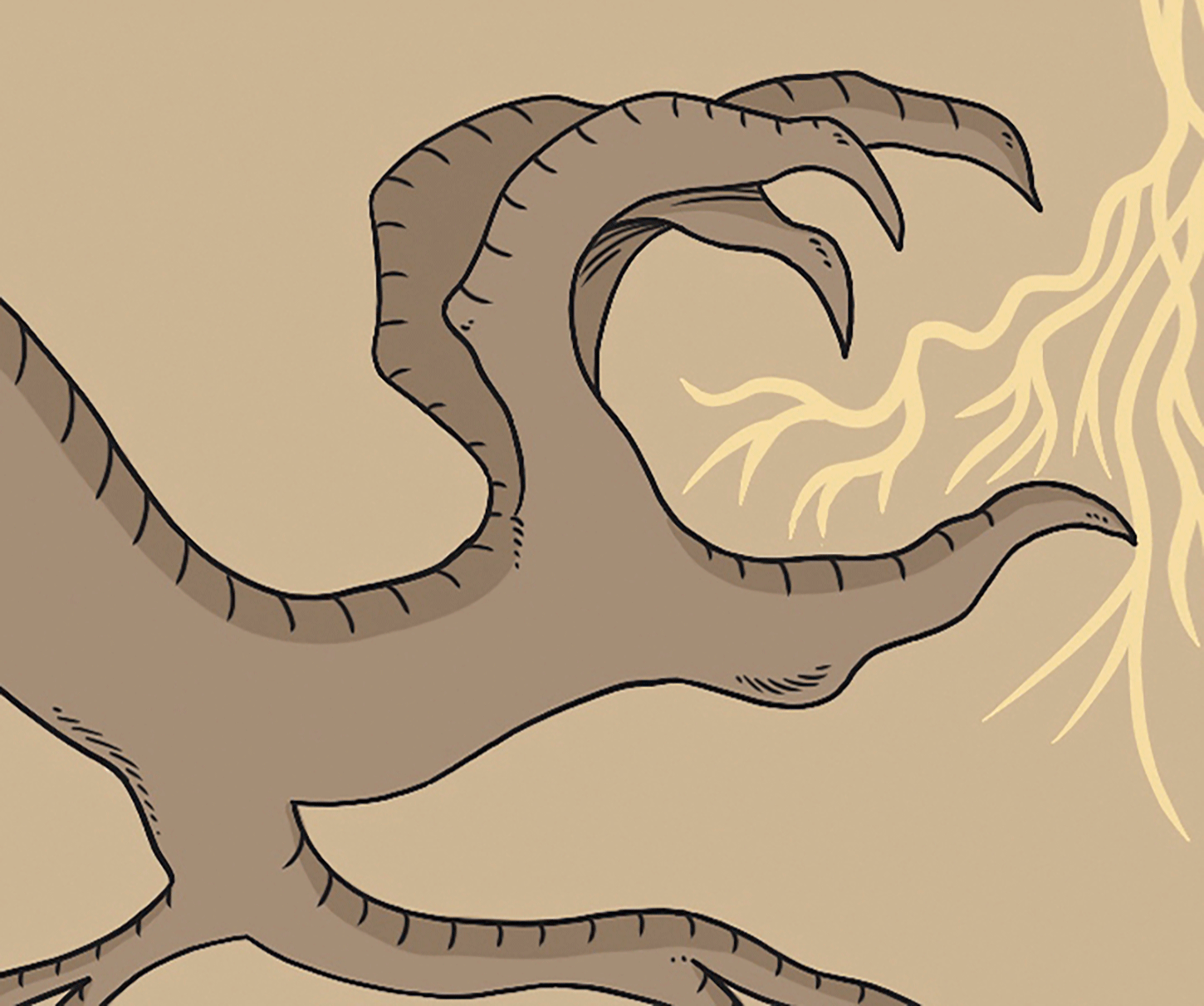
Stop demanding tree roots from sucking up moisture by digging a 2-foot-deep trench around the bed and lining it with corrugated plastic panels. Overlap the edges by 6 inches and seal them with polyurethane adhesive and stainless sheet-metal screws. Leave the panels’ top edge exposed so roots can’t grow over it.
Slugs
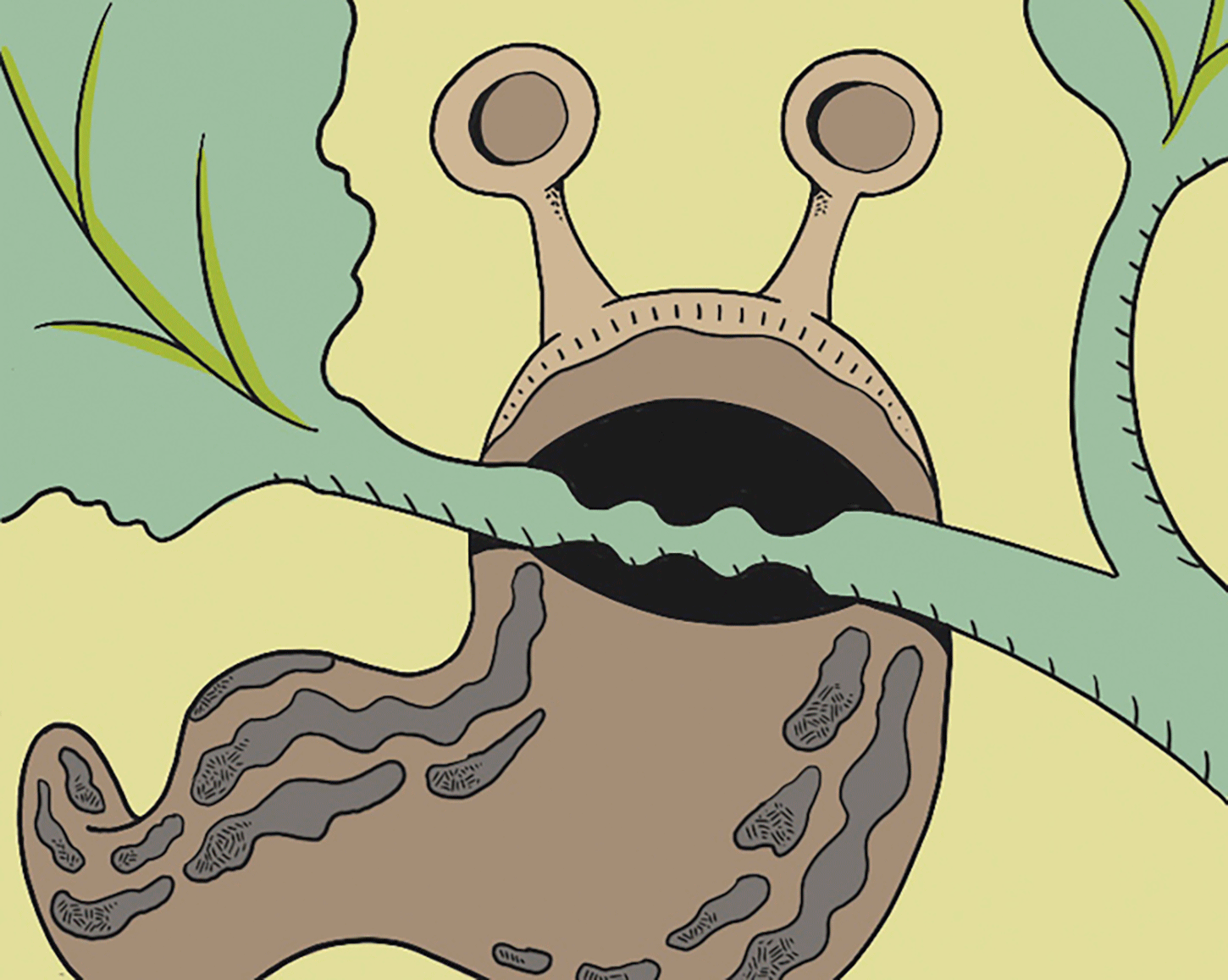
These garden pests won’t touch copper—it gives their slimy bodies a shock. A strip of copper flashing wrapped around the outside of beds can keep slugs out. Crispy seaweed mulch or a sprinkling of coffee grounds also repel them. Or patrol beds an hour before sunrise or an hour after dark to pick them off plants by hand.
Aphids

Add companion plants like marigolds, nasturtiums, and petunias to vegetable gardens to repel aphids. These plants emit compounds that discourage all kinds of damaging insects from munching away in your garden.
Rabbits and Woodchucks

Enclose your vegetable garden with a fence at least 3 feet tall and 3 feet from your beds. Line it with 4-foot-wide, ½-inch galvanized hardware cloth buried 1 foot deep under the gate to stop furry critters from chewing through or digging under it. Rig the gate to close automatically, and make sure it has no gaps wider than 1 inch.
Deer

Deer can’t dig under or chew through fences, but they can jump over them. If you live around deer, consider adding plastic netting at least 8 feet high hung around the garden perimeter.
